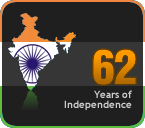Right to Education (RTE), Is it really a great legislation that will help change this nation? Or is it one of those high sounding utopian papers to be mentioned in future Independence Day and Republic Day speeches?
Time can only tell which way it will go but time cannot decide the outcome. We the people of this country (aam admi) have the choice to determine whether to park it in many of those boring speeches or to make it really work for us. Before determining the XYZ (Is it good or bad? How is it going to change our life? What needs to be done? Alternatives etc.), let’s see the ABC (What it actually is) of this piece of legislation.
ABC of Right to Education – what exactly is this in common parlance!
Every child of this country who is between 6 and 14 years of age is legally entitled to receive free and compulsory elementary education (Class VIII). The Government is responsible and accountable for ensuring this.
By the way, what is the meaning of Free and Compulsory education? The intent is not to compel anybody forcibly to go to school. It is compulsory for the government to provide opportunity, resources, facilities and infrastructure for all the future citizens. Main features of the Act through which the government is supposed to ensure the right to education for all the children are:
For improving Infrastructure (to be ensured within 3 years from now)
· The governments shall ensure a school for class 1 to 5 within a distance of 1 KM in every neighborhood and in the case of classes 6 to 8 within a distance of 3 KM.
· It is the fundamental right of every child to have access to a school with the following facilities:
1. An all weather building (at least one room per teacher, kitchen, store room)
2. Separate toilet facilities for Girls and Boys
3. Necessary teaching staff (At least one teacher for 40 Children and a Head teacher in case of total number of Children exceed 100)
4. Safe Drinking Water
5. Library (providing newspapers, magazines and books on all subjects including story books)
6. Play ground (Play material, games and sports equipment shall be provided to the children by the school)
For Standardization of Basic education:
· Central government will develop a framework of national curriculum
· Development and enforcement of standards for training the teachers by the government
· Center to provide technical support and resources for innovation and capacity building
To provide better opportunities for underprivileged and disadvantaged sections, this law stipulates:
· Private schools to admit at least 25% of their class strength with children from weaker sections and disadvantaged groups in their schools without any fee in class 1 every year. Private schools will receive reimbursements for such admissions from the government on the basis of per-child expenditure in government schools. (With effect from 2011 Academic year. State Governments to identify the vulnerable groups which includes children of single mothers)
To improve management and regulation of schools:
· All schools (exclude Private unaided schools) shall be managed by school management committees (SMC). (75% of SMC members are to be the parents and guardians of children.)
· All private schools need to get themselves recognized by meeting the specified norms and standards of RTE within 3 years. Failing to do so will lead to closure of such a private school.
Immediate changes in the life of aam aadmi due to RTE are:
· Your child’s admission into a school cannot be denied for the delay in getting Transfer Certificate or Proof of age.
· Children and their parents cannot be subjected to screening tests. Violation of this provision is punishable.
· No Teacher shall engage in private tuition or private teaching activity
· No Child shall be required to pass a board examination till the completion of Elementary education. Basically the school management cannot stop promotion to the next class by sighting failure in exams as the reason
· Children above the age of 6 years shall be admitted to appropriate class for their age in the government schools. The Schools shall provide special facility to train the children to bring them up to speed
Show me the money honey!
Well… This requires lots of money and first of all need reasonable estimates. Central and State governments are going to share the expenses for this. After a lot of bickering which almost threatened the realization of this legislation, finally the arrangement is 65% from center and 35 % from States (Subject to change based on further deliberations).
· Out of the existing teaching staff, about 7 lakh teachers need to be trained
· 12 lakh new teachers need to be appointed
· Many new schools to be built and existing ones to be upgraded
Government of India estimates an expenditure of 1,70,000 Crores over next five years for implementation of the Act. The Prime Minister and HRD minister have assured that funding is not going to impede this initiative.
XYZ of Right to Education – analysis of impact and intent!
This is a good legislation that has the potential to change the country. In fact this is what probably many of the tax payers were hoping the governments to spend their money on. As you can see from the features, this can be summarized three points:
· Now the children of this country have a right to expect a decent school and other facilities freely available within a reasonable distance. The governments are accountable for providing this.
· All the private schools can no more be exclusive clubs of rich and powerful folks. They need to open up at least 25 % of their seats to children from disadvantaged sections.
· People’s participation in administration is sought to be improved
First of all this is a step in the direction of ensuring equal opportunity for all the children of this country. We have a long way to go before claiming there is equal opportunity and level playing field in the country. But this certainly can be the beginning.
Other benefits that accrue are
· Huge recruitment and skill upgrade for teachers
· Standardization of elementary education across the country
· Participation and involvement of aam aadmi have the potential to make the system clean
· Quality of Government schools to be improved; in the long run Government school becoming the default choice for every child seems to be the vision
Implementation is crucial as we have seen many a good plan torn apart by our failure in implementation. Many times lack of clarity on who is responsible for what is landing the aam aadmi in that complicated maze of different government departments. Grey areas that are left to the discretion of lower level government staff is a recipe for rampant corruption especially when the participation of informed public is very low.
In this law there is a clear definition of responsibility on various arms of the government which gives hope that this dream can be realized. The center is responsible for coordination and provision of funds. States to work out the implementation details based on their local conditions. Center has issued module rules which are guidelines for the states to make the implementation laws. Local governments (Panchayat, Municipality etc.) are given the responsibility to maintain a register of all the children in their area and their schooling status.
How are the disadvantaged sections identified and by whom?
As of now SC, ST, Minority, economically backward, children of single mothers etc are being considered. States governments will finalize the details. Selection of these children into 25% quota of private schools has to be random or according to a specified scheme.
Who will provide the study material and other costly equipment required by children admitted in to private schools?
Ideally, the school itself shall provide that as the requirement is going to be different from school to school. State laws must specify and track this.
What the vigilant aam aadmi can do to ensure success
· Get involved in SMCs and watch out how things are progressing
· Watch-out and involve in the selection process of disadvantaged children into private schools
· Do not try and get undue benefits by exploiting and engineering loopholes in this
· Encourage every child you know of to enroll into a school
· Watch-out, what our state governments are doing in terms of detailed provisions and rules
Weekend Politician Note: I hope this post is helpful to at least some of the readers. Please feel free to seek clarifications if you need any. Your suggestions and concerns on this can also be posted. I will definitely be making a few trips to the concerned authorities to ensure aam aadmi voice is heard and reflected in implementation.

